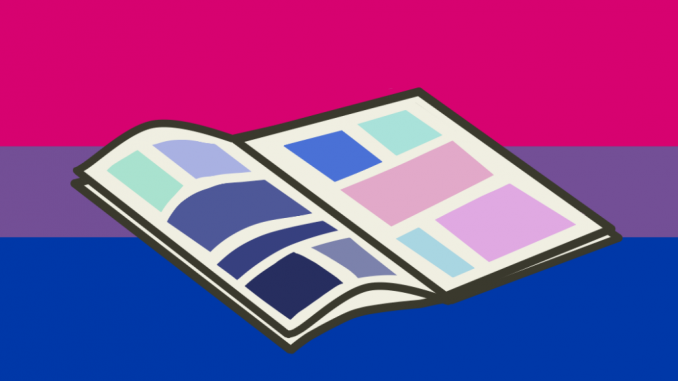
Comics have always been part of James Baker’s life, but he didn’t see LGBTQ characters until he read the first volume of “Young Avengers” which features Wiccan and Hulkling in a relationship.
“You see a lot of parents in media being against their kids being gay,” said Baker, a transgender 2020 public health alumus. “So having parents that were like. ‘No, yeah, we support our kids dating,’ like that sort of thing, I thought it was really sweet.”
After Tim Drake, the third Robin in the Batman franchise, came out as bisexual in “Batman Urban Legends #6,” LGBTQ comic fans celebrated. LGBTQ representation in comic books gives readers a chance to see themselves and have their stories told.
Steven Fino, a gay third-year English PhD student, read comics when he was younger and picked them back up again as a freshman in college because he wanted to do more reading for fun.
Fino is primarily a fan of Batman’s supporting cast, known amongst fans as the Batman family or Batfam. The Batfam consists of Batman’s former sidekicks, including the five Robins, three Batgirls and other supporting characters.
On Aug. 10, “Batman: Urban Legends #6: Sum of Our Parts: Chapter 3” revealed Tim Drake is attracted to men when he agrees to go on a date with his friend Bernard.
Fino has always interpreted Tim Drake as bisexual because of his close relationship with Superboy and seeing Tim Drake’s bisexuality confirmed in an actual Batman comic was a step towards better representation, he said.
But he is nervous that after “Batman: Urban Legends” ends, Tim Drake’s bisexuality will be ignored because he did not come out in the main Batman books, like “Batman” or “Detective Comics,” which is what most fans read and where the big storylines happen, Fino said.
“I think they plan on coming back to that story arc at some point in the near future but I’m worried, much like with Kitty Pryde, that it will happen and they’ll say ‘yep this is a thing’ and then never talk about it again,” Fino said.
There needs to be a balance between LGBTQ characters being totally defined by their sexuality and having gay representation relegated to one-off events, Baker said. Limiting LGBTQ content like that makes it easy for people to write off and ignore a character’s LGBTQ identity.
“I want him to continue having boyfriends, you know like even if it’s just in the background like he’s in the middle of a date and has to go do Tim Drake stuff,” Baker added. “And so his date is interrupted and he has to, like he kisses his boyfriend on the cheek before he leaves.”
Tim Drake being bisexual is notable because Batman is one of the most well-known superheroes and anyone linked to Batman is going to have more visibility than a more obscure character would, said Millie Haper, a nonbinary junior English education major.
Previously, Haper had mostly found LGBTQ representation in comics from independent publishers, like “Paper Girls” from Image Comics which has two female main characters who are attracted to women. While Haper enjoyed seeing this representation, independent comics won’t get as much attention among the general public, they said.
“Now people who read comics, for people who want to get into comics, it’s very obviously there,” Haper added.
Having mainstream bisexual characters, like Tim Drake, is also important because some people may only be exposed to LGBTQ people through media, Baker said. If comics use stereotypes, that will only serve to reinforce the way some people see real LGBTQ people.
Fino wants Tim Drake to come out to the Batfam and have a heart-to-heart with his family, he said. Seeing LGBTQ characters being accepted by loved ones is reassuring for LGBTQ readers who struggle with whether or not to come out.
For Fino, the scene in “Detective Comics #859” where Batwoman confronts her father after being discharged under Don’t Ask, Don’t Tell, a policy from 1993 to 2011 that forced LGBTQ members of the armed forces to stay closeted, is the gold standard, he added. When Batwoman confronted her father, he told her that she acted honorably for staying true to herself and that he was proud of her.
“Even if you know logically that experience is probably going to go well, even if you have no reason to fear, the fear is always there,” Fino added. “And it’s just reassuring to see that played out well anytime it happens.”


Be the first to comment